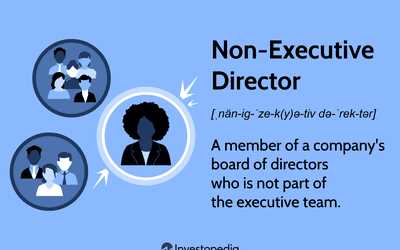Chair Definition in Business Responsibilities
In the world of business, the role of a chair is crucial in ensuring the smooth operation and success of an organization. The chair is responsible for overseeing the board of directors and ensuring that they fulfill their duties and responsibilities.
One of the main responsibilities of a chair is to lead board meetings and facilitate discussions. They set the agenda, ensure that all relevant topics are covered, and encourage participation from all board members. The chair also ensures that decisions are made in a timely manner and that the board operates within the legal and ethical framework.
Another important responsibility of a chair is to provide guidance and support to the CEO and other senior executives. They work closely with the CEO to develop and implement the organization’s strategic goals and objectives. The chair also acts as a liaison between the board and the CEO, ensuring effective communication and alignment of interests.
The chair also plays a key role in promoting good governance practices within the organization. They ensure that the board operates in accordance with the organization’s bylaws and policies, and that there is transparency and accountability in decision-making processes. The chair also oversees the evaluation of board performance and works to continuously improve the effectiveness of the board.
In summary, the chair is a vital position in the business world, responsible for leading the board of directors, providing guidance to the CEO, and promoting good governance practices. Their role is essential in ensuring the success and sustainability of an organization.
As a key figure in any business organization, the role of a chair is crucial in ensuring effective governance and decision-making. The chair is responsible for leading the board of directors and overseeing the overall strategic direction of the company.
Leadership and Facilitation: The chair plays a pivotal role in providing leadership and facilitating discussions among board members. They ensure that all members have an opportunity to express their views and contribute to decision-making processes.
Setting the Agenda: Another important responsibility of a chair is setting the agenda for board meetings. They work closely with the CEO and other board members to determine the topics that need to be discussed and the order in which they will be addressed.
Ensuring Board Effectiveness: The chair is responsible for ensuring the effectiveness of the board as a whole. This includes evaluating the performance of individual board members, promoting diversity and inclusion, and fostering a culture of transparency and accountability.
Conflict Resolution: In situations where conflicts arise among board members or between the board and management, the chair is responsible for facilitating resolution and maintaining harmony within the organization.
Monitoring Performance: The chair oversees the performance of the CEO and other senior executives, ensuring that they are effectively executing the company’s strategy and meeting their objectives. They also monitor the company’s financial performance and ensure compliance with legal and regulatory requirements.
Key Responsibilities of a Chair
1. Leadership and Decision-making
2. Board Governance
Another important responsibility of a chair is to ensure good governance within the board. This includes setting clear expectations for board members, establishing effective communication channels, and promoting transparency and accountability. You should also oversee the board’s compliance with relevant laws and regulations.
3. Strategic Planning
The chair plays a key role in the strategic planning process of the business. You need to work closely with the CEO and other board members to develop and implement the organization’s strategic goals and objectives. This involves conducting regular evaluations of the business’s performance, identifying areas for improvement, and making strategic decisions to drive growth and success.
4. Stakeholder Management

5. Performance Evaluation
One of the important responsibilities of a chair is to evaluate the performance of the CEO and other senior executives. You need to establish clear performance metrics and regularly review their progress towards achieving the business’s goals. This helps to ensure that the leadership team is accountable and that the organization is on track to success.
Overall, being a chair requires strong leadership, strategic thinking, and effective communication skills. By fulfilling these key responsibilities, you can contribute to the growth and success of the business.
CEO [CORPORATE FINANCE catname]
Strategic Planning and Decision Making

One of the key responsibilities of a CEO in corporate finance is to develop and execute a strategic plan for the company. This involves setting long-term goals, identifying growth opportunities, and making informed decisions that align with the company’s vision and objectives. You are responsible for analyzing market trends, assessing risks, and evaluating potential investments to ensure the company’s financial stability and profitability.
Financial Management
Leadership and Team Management
External Relations

| Responsibilities | CEO [CORPORATE FINANCE catname] |
|---|---|
| Strategic Planning | ✔ |
| Financial Management | ✔ |
| Leadership and Team Management | ✔ |
| External Relations | ✔ |

Emily Bibb simplifies finance through bestselling books and articles, bridging complex concepts for everyday understanding. Engaging audiences via social media, she shares insights for financial success. Active in seminars and philanthropy, Bibb aims to create a more financially informed society, driven by her passion for empowering others.
